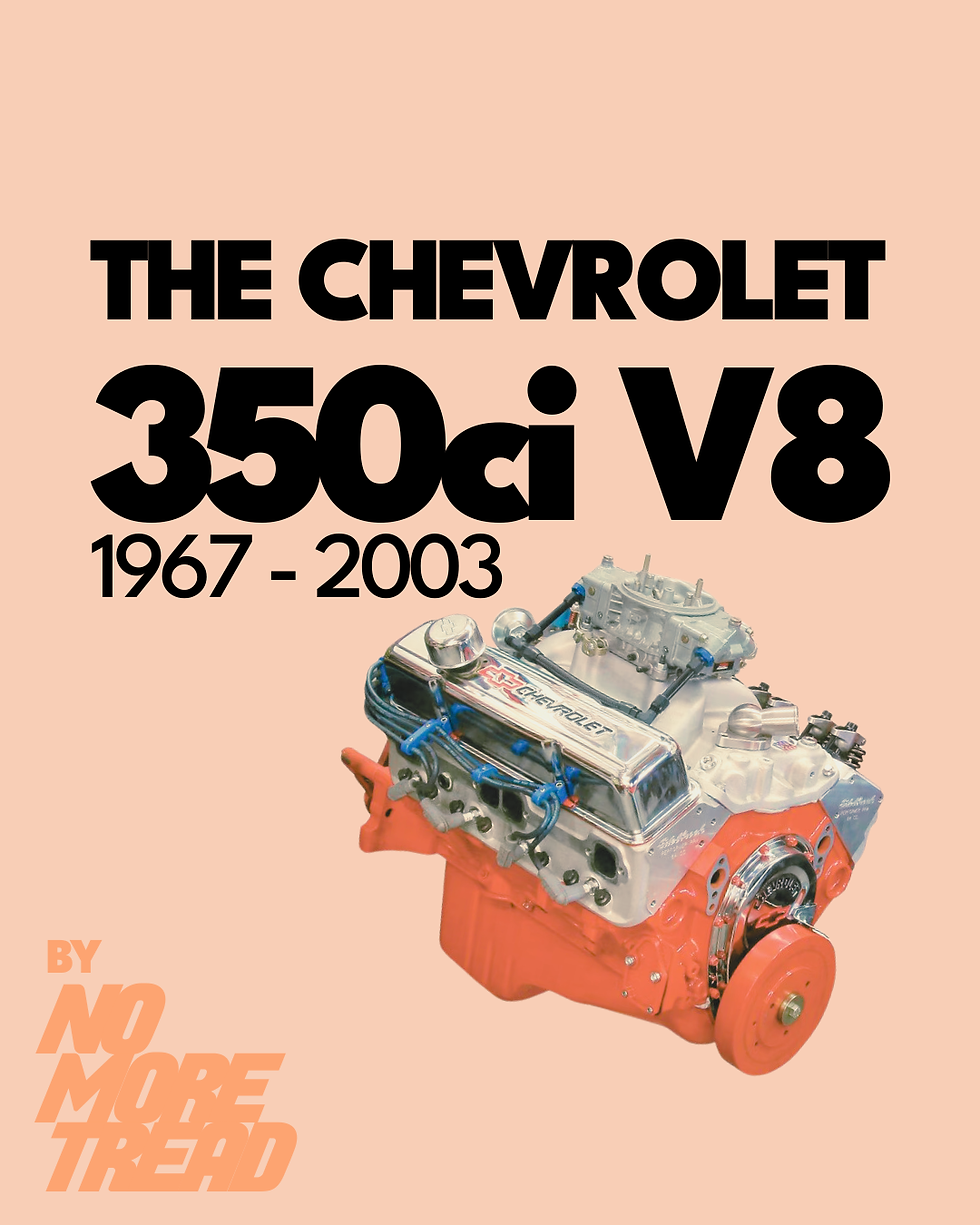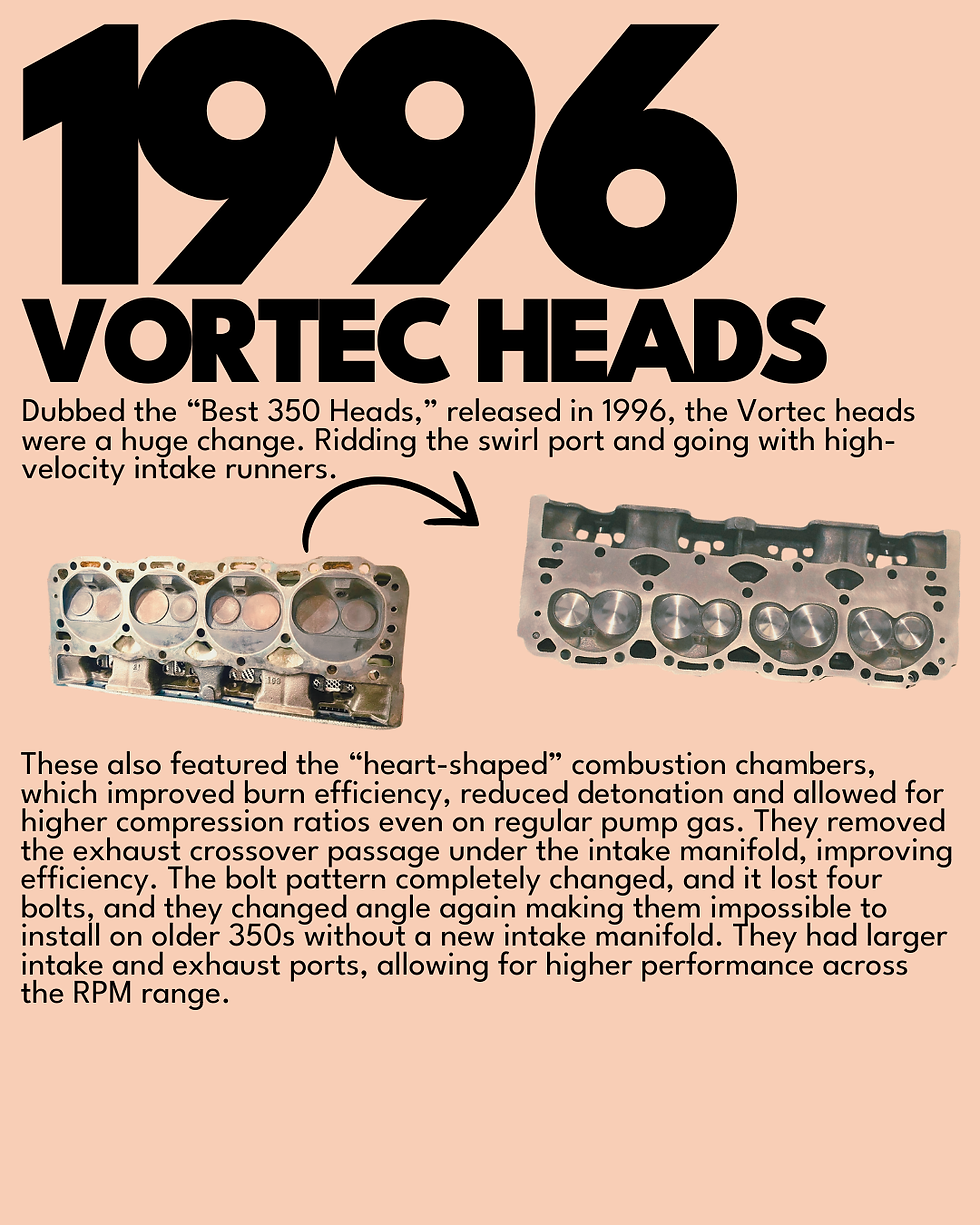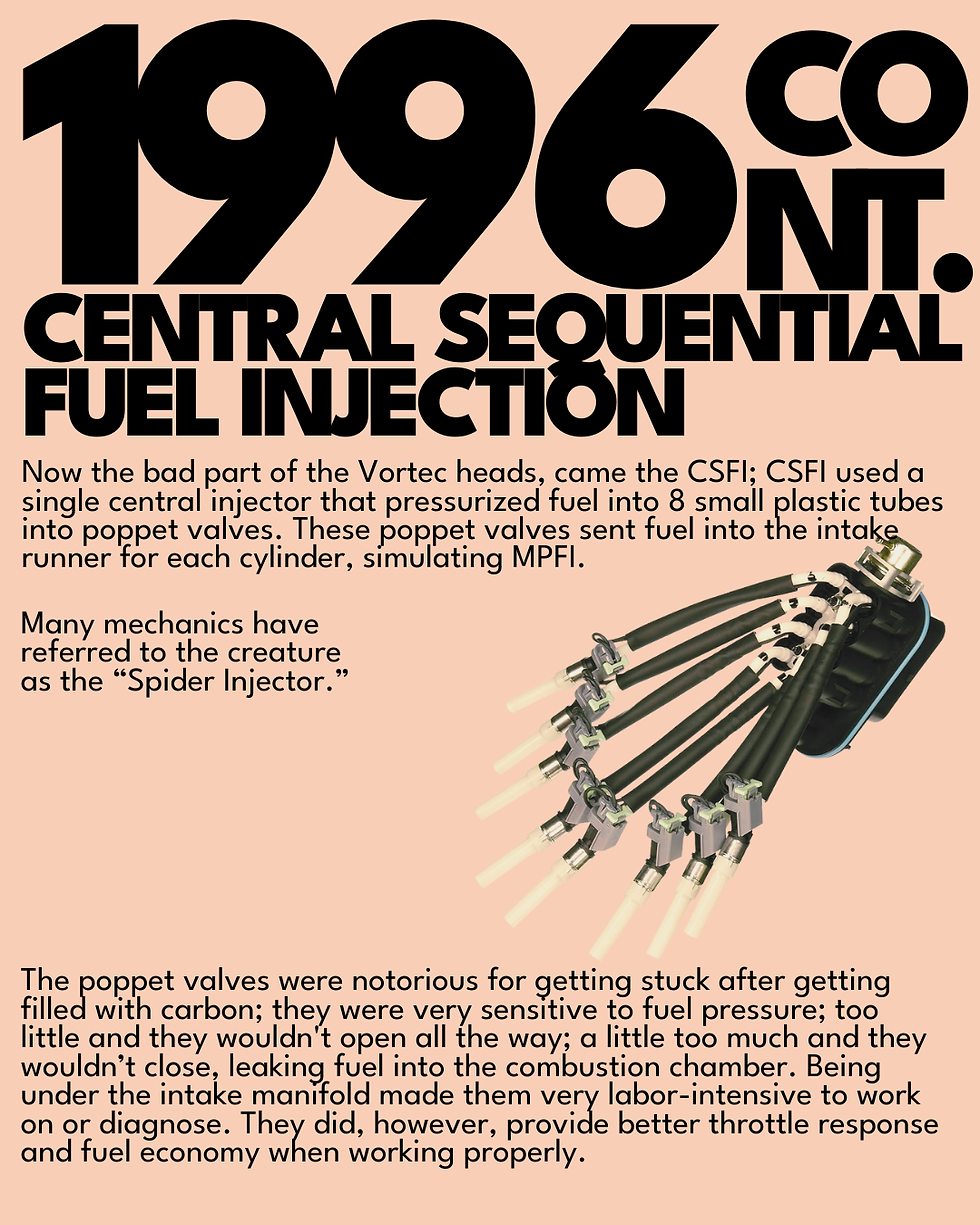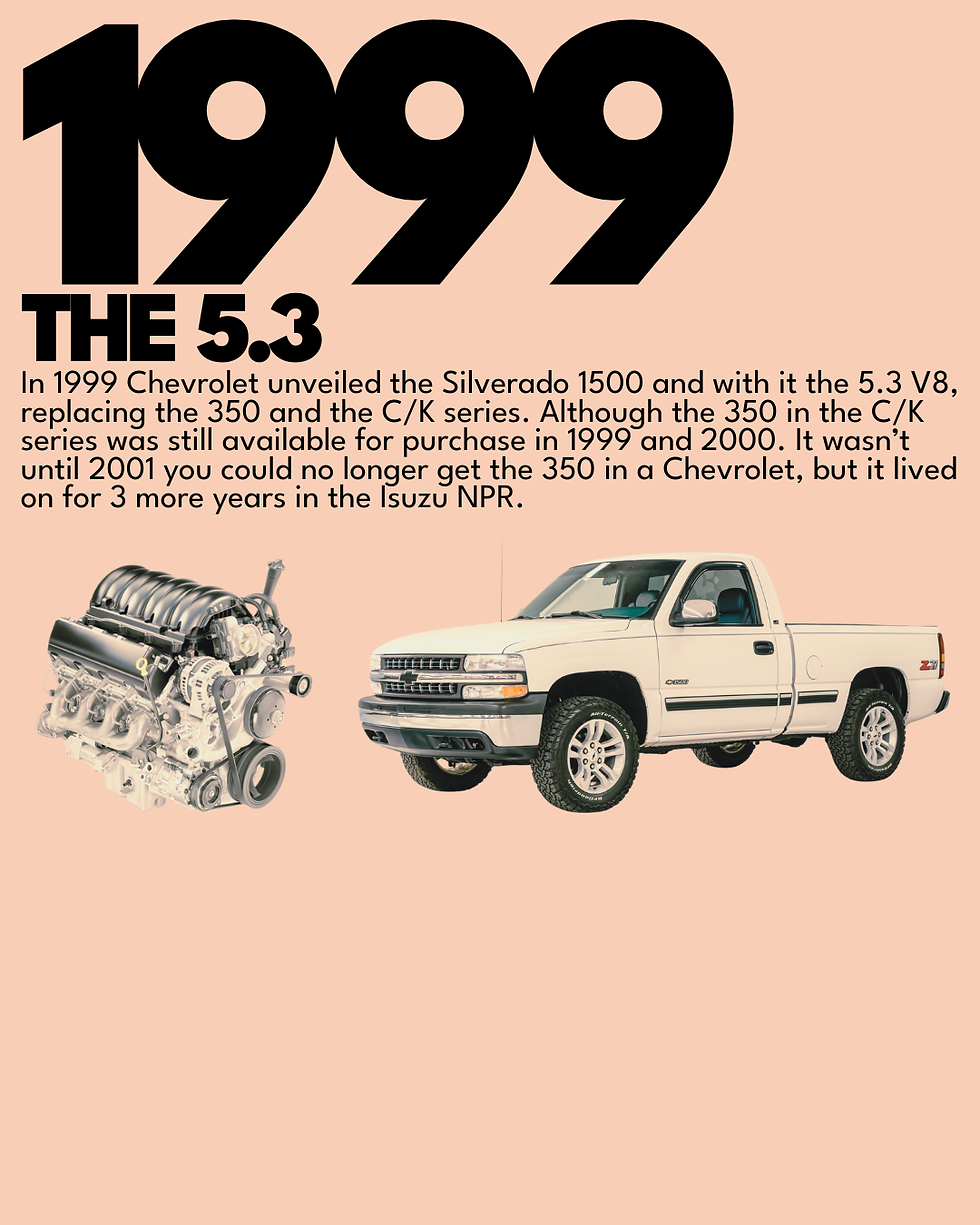The History of the Chevrolet 350ci V8
- Morgan Lindsey

- May 23
- 3 min read
Updated: Aug 5
*This article was designed to be released on Instagram and has been poorly converted to a web article.


In 1967, Chevrolet debuted the 350, which is based on the same small block family as the 283, 302, 327, among others. It was first made available as a high-performance option in the Camaro, later put in the Nova, the Pontiac Beaumont, and then the rest of the Chevrolet lineup in 1969.
The 350 replaced the 327 as the main V8 in the lineup. The rest of this article will be from the trucks perspective.

In 1975, Chevrolet got rid of points and condensers in favor of the High Energy Ignition (HEI). This became the ignition system for the 350 for the rest of its lifetime.
HEI allowed for much better efficiency, power, and reliability. It also featured a built-in ignition coil, eliminating the need for one, simplifying wiring, and reducing failure points.

In 1986, Chevrolet updated the rear crankshaft seal (rear main seal). This new design was now only one piece versus the previous two-piece design. The two-piece design was notorious for leaking at the area where the halves met; the seal was also incredibly difficult to install, with having to either attempt to put in place with your hands or dropping the crankshaft.
The new design only required the removal of the transmission and flexplate/flywheel for replacement; it also provided a much better seal. This design change made minor changes to the crankshaft and the block itself, making interchanges with pre-86 and post-86 350 blocks a bit tricky.

In 1987, Chevrolet unveiled the “Swirl-Port Heads”. These “swirled” the fuel/air mixture before heading into the combustion chamber, which helped atomize the fuel, resulting in better fuel economy. They featured smaller intake ports, limiting high RPM performance. The intake valves were also recessed, setting them deeper into the combustion chamber, giving them a longer time “swirling”. This helped reduce emissions and improve low-end torque.
The exhaust ports also got smaller, further limiting high RPM performance but improving emissions. These heads are popular for trucks and towing but not for high-performance builds.

Dubbed the “Best 350 Heads,” released in 1996, the Vortec heads were a huge change. Ridding the swirl port and going with high-velocity intake runners.
These also featured the “heart-shaped” combustion chambers, which improved burn efficiency, reduced detonation, and allowed for higher compression ratios even on regular pump gas. They removed the exhaust crossover passage under the intake manifold, improving efficiency. The bolt pattern completely changed, and it lost four bolts. They changed the angle again, making them impossible to install on older 350s without a new intake manifold. They had larger intake and exhaust ports, allowing for higher performance across the RPM range.

Now, the bad part of the Vortec heads came the CSFI; CSFI used a single central injector that pressurized fuel into 8 small plastic tubes into poppet valves. These poppet valves send fuel into the intake runner for each cylinder, simulating MPFI.
The poppet valves were notorious for getting stuck after getting filled with carbon; they were very sensitive to fuel pressure; too little, and they wouldn't open all the way; a little too much and they wouldn’t close, leaking fuel into the combustion chamber. Being under the intake manifold made them very labor-intensive to work on or diagnose. They did, however, provide better throttle response and fuel economy when working properly.

In 1999, Chevrolet unveiled the Silverado 1500 and with it the 5.3 V8, replacing the 350 and the C/K series. Although the 350 in the C/K series was still available for purchase in 1999 and 2000. It wasn’t until 2001 that you could no longer get the 350 in a Chevrolet, but it lived on for 3 more years in the Isuzu NPR.

The Isuzu NPR was the last truck to have the CSFI 350. The 5.3 that debuted in 1999 had replaced the 350 (5.7) in the Chevrolet lineup.
There was one fuel injected 350, that was the LS1. Debuted in 1988, and last available in the 2004 Corvette. In injection system was nothing like CSFI, it was much more comparable modern fuel injection. This variant of the engine was never available in trucks.




Comments